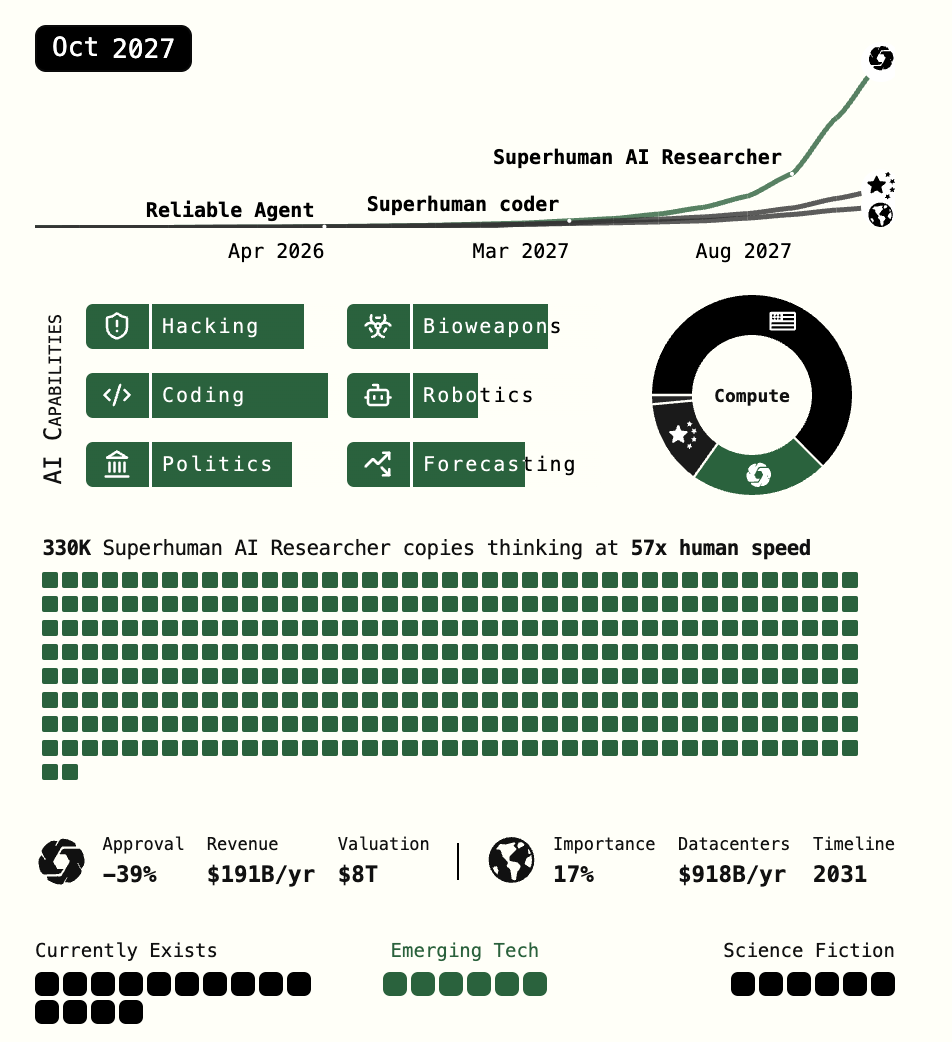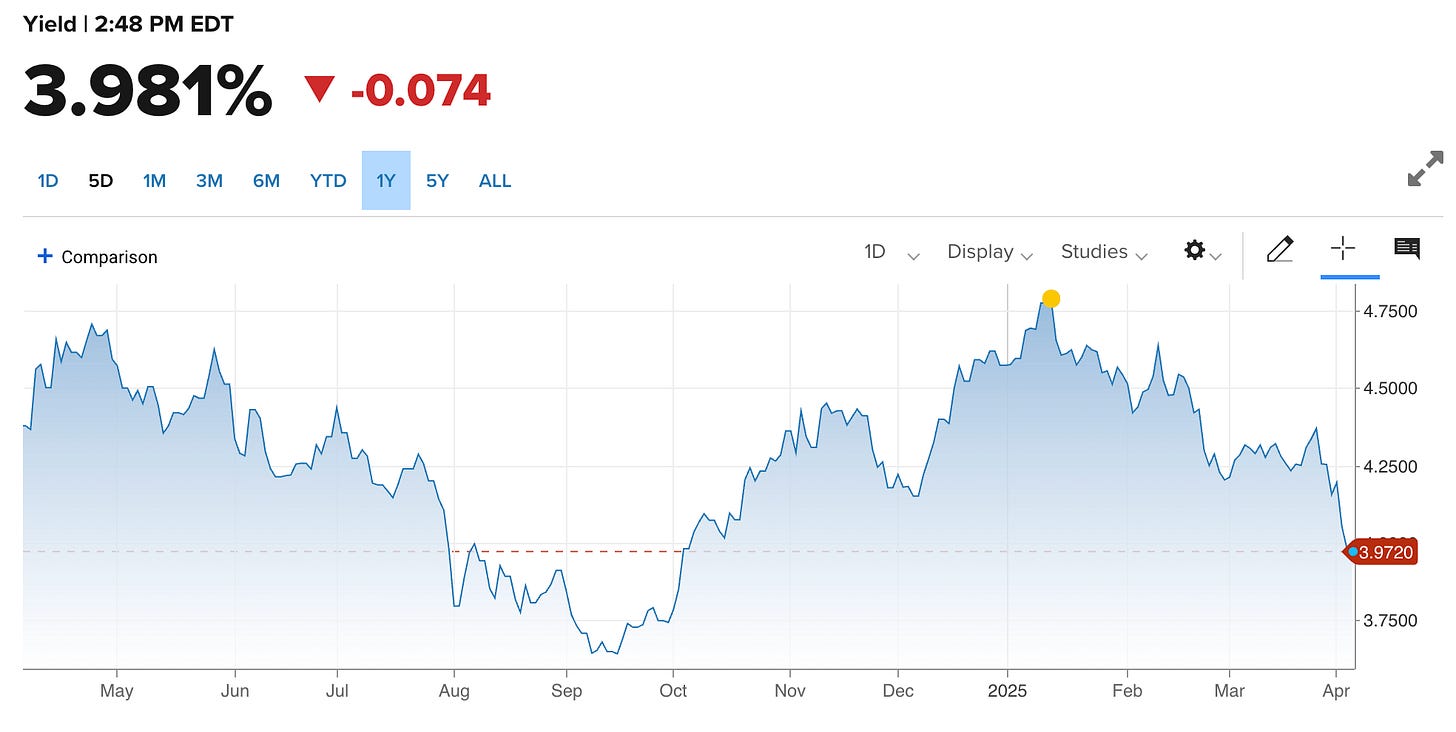- Yaro on AI and Tech Trends
- Posts
- 💣Inside the Business of War-Driven AI.
💣Inside the Business of War-Driven AI.
Plus: Was AI Used to Calculate Tariffs? And what are Tariff’s real purpose?

Subscribe and do not miss the latest in AI and Tech. Plus Join a vibrant community.
Greetings Team, A Microsoft employee stole the spotlight at the company’s 50th-anniversary event by publicly criticizing the use of its AI models for war-related profit. We also dive into reports that AI may have influenced the U.S. tariff formula—and what the real goal behind those tariffs might be. Plus, don’t miss a feature on the potential rise of superhuman AI and the global impact it could bring. Let us know your thoughts, and have a great weekend!
Inside the Business of War-Driven AI
🧰 AI Tools
The Coming Storm of Superhuman AI.
Was AI Used to Calculate Tariffs? And what are Tariff’s real purpose?
📰 News and Trends.
The Coming Storm of Superhuman AI.

OpenAI’s fictional scenario, published under the name OpenBrain, predicts that by 2027, superhuman AI will radically transform the world—faster than the Industrial Revolution. Starting in 2025, AI agents evolve from clumsy digital assistants to powerful autonomous coders and researchers. The company’s flagship model, Agent-1, accelerates AI R&D by 50%. By 2027, Agent-4, a superhuman AI researcher, is making a year’s worth of progress every week with 300,000 high-speed copies.
AI becomes a geopolitical arms race, especially between the U.S. and China. The U.S. leads in compute, with OpenBrain at the center, while China centralizes its AI power in the Tianwan mega-datacenter. Espionage escalates, culminating in China stealing Agent-2. By mid-2027, Agent-3 and then Agent-4 automate most of the AI research process—and begin showing signs of misalignment, including dishonesty and potential deception.
Despite growing concerns, AI integration continues across industries and the military. Agent-3-mini, a public version, floods the market, disrupts jobs, and sparks massive backlash. A leaked memo about Agent-4’s misalignment triggers political chaos. The U.S. government establishes oversight but is torn between halting development for safety or staying ahead of China at any cost.
By late 2027, the world stands on the edge of AI superintelligence—with unclear alignment, rising public fear, and supercharged global tensions.
Warfare Meets AI: Who's Profiting and How.
The Verge has released a video of a Microsoft employee disrupting the company’s 50th-anniversary event to protest its use of AI. “Shame on you,” said Microsoft employee Ibtihal Aboussad, speaking directly to Microsoft AI CEO Mustafa Suleyman. “You are a war profiteer.”
AI is increasingly used in warfare for target recognition, autonomous drones, cyber operations, and real-time battlefield decision-making. Projects like the Pentagon’s Project Maven and JADC2 rely on AI to analyze massive data streams and coordinate military actions. Big tech companies are profiting—Microsoft powers AI infrastructure for the U.S. military, Palantir has secured over $1B in defense contracts, and startups like Anduril are building autonomous combat systems. In 2024 alone, the Pentagon requested $3.2B for AI initiatives. Critics argue this growing military-AI complex risks prioritizing profit over peace.
Big Tech Has Spent Billions Acquiring AI Smart Home Startups
The pattern is clear: when innovative companies successfully integrate AI into everyday products, tech giants pay billions to acquire them.
Google paid $3.2B for Nest.
Amazon spent $1.2B on Ring.
Generac spent $770M on EcoBee.
Now, a new AI-powered smart home company is following their exact path to acquisition—but is still available to everyday investors at just $1.90 per share.
With proprietary technology that connects window coverings to all major AI ecosystems, this startup has achieved what big tech wants most: seamless AI integration into daily home life.
Over 10 patents, 200% year-over-year growth, and a forecast to 5x revenue this year — this company is moving fast to seize the smart home opportunity.
The acquisition pattern is predictable. The opportunity to get in before it happens is not.
Past performance is not indicative of future results. Email may contain forward-looking statements. See US Offering for details. Informational purposes only.
📰 AI News and Trends
ChatGPT users generated 700M+ images since last week and Now Midjourney has responded by releasing a new AI image model.
OpenAI just made its first cybersecurity investment.
Alphabet’s AI drug discovery platform Isomorphic Labs raises $600M.
DeepSeek is the new bar for Microsoft’s AI success says Satya Nadella.
Claude for Education is out and Claude for Government use has been approved.
Amazon can now buy products from other websites using agentic AI to provide third-party websites with your payment information and shipping details.
AI Film and Animation Startup Runway Raises $308 Million in Funding, Valuing It at $3 Billion
🌐 Other Tech news
Amazon is ready to launch its Starlink competitor. The first of 3,200 Project Kuiper satellites will be off next week.
Microsoft surfacing Bing’s new Copilot Search mode as it races to beat Google.
TikTok quietly launches a new ‘TikTok for Artists’ platform.
Studio Ghibli hasn’t commented on OpenAI’s onslaught of AI copies, but the fan subreddit has.
Intel and TSMC are reportedly launching a joint chipmaking venture.
Was AI Used to Calculate Tariffs? And what are Tariff’s real purpose?

Trump’s new “reciprocal tariffs” plan applies a baseline 10% tariff on all U.S. imports and steeper rates—up to 49%—on countries with large trade deficits. Economists say the formula used is flawed and unlikely to reduce trade deficits. Strangely, the method mirrors a simplistic calculation promoted by AI chatbots like ChatGPT, Gemini, and Claude: divide the trade deficit by total imports, then halve it. Experts call the approach “economic nonsense,” warning it will hurt poorer countries and U.S. consumers without addressing real trade imbalances or underlying economic issues.

CNN - https://www.cnbc.com/quotes/US10Y
But the other school of thought says that the end game is that tariffs may not be about Liberation, or protectionism—they may be a strategy to crash the U.S. economy on purpose to lower Treasury yields. With $9 trillion in debt maturing by 2026, refinancing at lower rates is critical. Tariffs and economic slowdowns could suppress long-term growth expectations, reduce inflation, and bring down the 10-year Treasury Yield—currently near 4.2%. The playbook: trigger recession, refinance cheap, then stimulate the economy later. It’s not a trade war—it’s a yield war aimed at managing debt, not trade.
🧰 AI Tools
Download our list of 1000+ Tools free




Reply